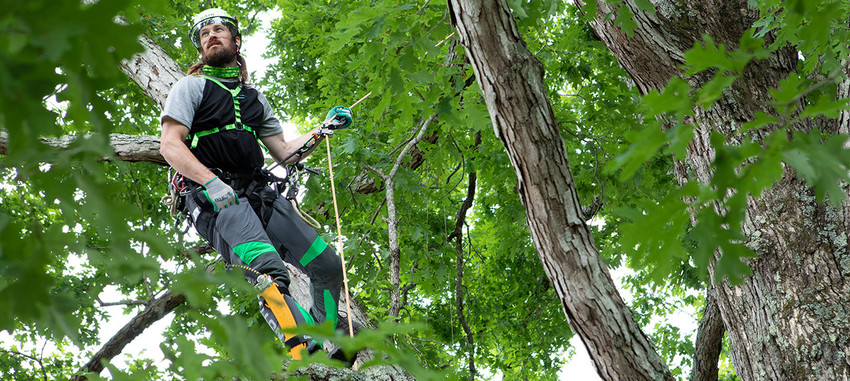TFTC #28 Contract Climbing With Derrick Martin: Part 1
Sherrilltree Jul 13th 2021- When did you start contract climbing?
- I went out full time in June of 2020. I started part-time in September or October before that. The company I was with lost a couple people, so I didn't feel like it was the right time to leave them, so I talked to them about doing part time—two weeks with them, and two weeks of contracting on my own. After that I got so busy. Then Covid hit and I was scared to go out on my own, but I was so busy, I couldn’t NOT go out full time. I really enjoyed working at that company, but contracting is something I always wanted to do.
- How much hustle did you have to put into getting the contracting business up to speed?
- I felt really lucky for being able to go part time at first because of my good relationship with the prior company I worked for. I was able to ease into it and build a client base the first six months or so. Also, my name was in the local market from doing competitions and seminars—more than I realized. My social media had gained a following locally as well as other places, so word got out through the grapevine. Companies would share my name with other contractors starting their own companies. Crane companies would share my number with tree companies, which gave me even more calls.
- Another thing that came of it was training gigs with private companies. People saw me at Arborfest and the PennDel arborist symposium and wanted me to come out to work with their climbers. That was unexpected, but picked up right from the beginning, which I felt was lucky.
- One thing I thought I was going to lose was crane work, but it’s actually what I find myself doing more than anything now. It made sense once I put it together—if I can save two hours on a crane, it saves the company a lot of money.
- Let’s talk more about crane climbing. What makes you more efficient than the companies’ climbers, that they would call you instead of using their own?
- Experience is a big part of that, the amount of crane work I’ve done in the past. Not just experience with trees, but with operators. Companies with younger operators like pairing them with me because I can help them grasp the climber’s perspective. Otherwise it’s being able to see the next step. If you can see the next step and plan for it, it makes everything more efficient. Maybe it’s sending some wood with a branch to save one cut.
- It sounds like when you’re on site you take an active role in directing the flow of the job.
- I do! They don’t ask me for that; maybe it’s just my nature. I try not to do it in a way that I’m taking over a job site. Instead I offer suggestions based on my experience. For instance, I’ll show up to a crane job before the crane to help strategize placement. I’ll say something like, “If it were me, I'd probably put the crane over here, and have the chipper over there.” I just throw out what I see, but I try not to be forceful with it. Ultimately they make the call. Sometimes they see something else, or know something I don’t about the flow for the day. So I just offer opinions about how things might be able to go more smoothly. Back to crane efficiency- turning is where you lose the most time, so if we can find a setup that limits the amount of movement the machines are doing, it makes a job go much more quickly.
“Companies with younger operators like pairing them with me because I can help them grasp the climber’s perspective. Otherwise it’s being able to see the next step. If you can see the next step and plan for it, it makes everything more efficient."
- Contract climbers are increasingly being seen as a training resource. What effects have you seen in the companies you’re currently helping, from your presence on their crews?
- I have seen some of that. One of my favorite examples is a company I work with regularly—when I first started working with them, the only person on site with a helmet was the owner. After a while I noticed a couple other guys with helmets. Now, every single guy on site wears one. I can’t say that’s directly because of me, but I feel like part of it is from my example. It’s neat to see those changes from a safety perspective. The other thing I’ve noticed is the growing number of people wearing chaps or saw pants after working with them a number of times. They’ll ask me about my saw pants, and that starts the conversation. After that, it’s amazing how many guys will go out and purchase saw pants.
- Thanks, Derrick, for taking the time to talk to us!

